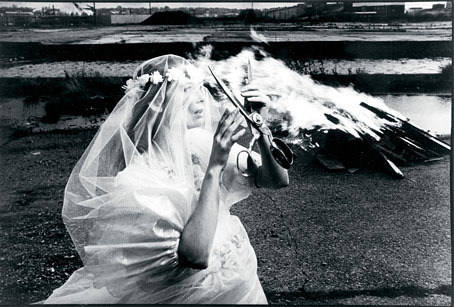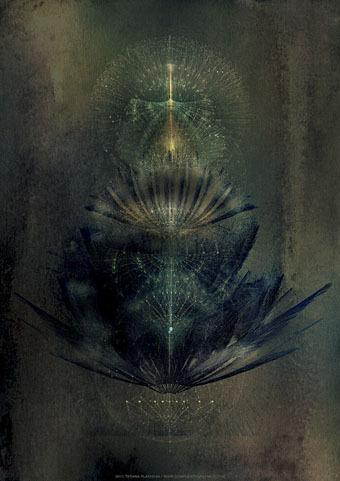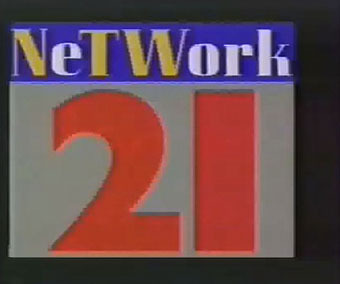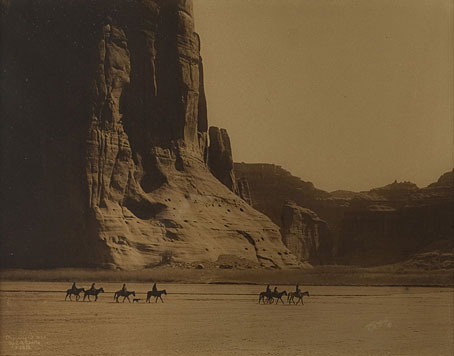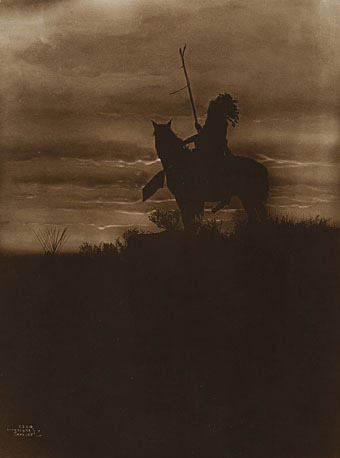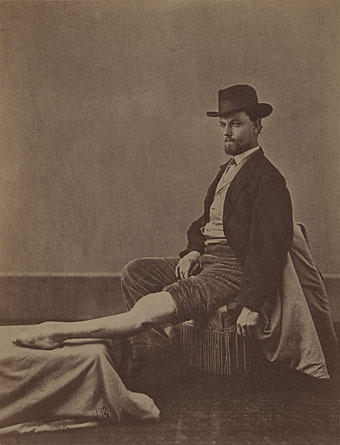John Coulthart's Blog, page 305
July 4, 2011
Derek Jarman's Neutron
Tilda Swinton in The Last of England (1988).
John Dee turned up in Derek Jarman's Jubilee after scenes from an earlier script about the Elizabethan magus were grafted onto the punk dystopia. Jarman's career was to be littered with these unrealised projects, the strangest of which was Neutron, an apocalyptic science fiction film he was planning following the comparative success of The Tempest in 1979. The description he gives in his "Queerlife", Dancing Ledge, is as follows:
There are six published manuscripts of Neutron, which zig-zag their anti-heroes Aeon and Topaz across the horizon of a bleak and twilit post-nuclear landscape. 'Artist' and 'activist' in their respective former lives, they are caught up in the apocalypse, where the PA systems of Oblivion crackle with the revelations of John the Divine. Their duel is fought among the rusting technology and darkened catacombs of the Fallen civilization, until they reach the pink marble bunker of Him. The reel of time is looped—angels descend with flame-throwers and crazed religious sects prowl through the undergrowth. The Book of Revelations is worked as science fiction.
Lee [Drysdale] and I pored over every nuance of this film. We cast it with David Bowie and Steven Berkoff, set it in the huge junked-out power station at Nine Elms and in the wasteland around the Berlin Wall. Christopher Hobbs produced xeroxes of the pink marble halls of the bunker with their Speer lighting—that echo to 'the muzak of the spheres' which played even in the cannibal abattoirs, where the vampire orderlies sipped dark blood from crystal goblets.
If that doesn't whet your appetite I don't know what would. Later drafts of the script were written with Jon Savage. If the film had been made it might well have been terrible, of course, but Christopher Hobbs, who worked with Jarman on later films, as well as on Velvet Goldmine and the BBC's Gormenghast, would at least have made it look great. David Bowie is very good in The Man Who Fell to Earth but his acting is seldom as successful elsewhere. Steven Berkoff would have been a better bet but a Bowie film would have received far more attention. Bowie discusses his involvement in a 1999 interview here (and also slags off Velvet Goldmine…booo!).
All this was happening circa 1980 when Reagan and Thatcher had just begun their insidious reigns and the Cold War was moving into a new era which generated a great deal of apocalyptic anxiety. Jarman's response to all of this materialised in 1988 with The Last of England, his bleakest film, and a work in which we can perhaps see some of the nightmare scenes which Neutron would have conjured. I've never liked The Last of England very much but it contains a few sequences worth savouring, especially shots of the luminous Tilda Swinton dancing through the wasteland devastation. There's a fragment of that here with her ripping her dress to pieces accompanied by the voice of Diamanda Galás. Meanwhile, does David Bowie still have the production designs for Neutron? If so, when do we get to see them?
Previously on { feuilleton }
• Mister Jarman, Mister Moore and Doctor Dee
• The Tempest illustrated
• In the Shadow of the Sun by Derek Jarman
• Derek Jarman at the Serpentine
• The Angelic Conversation
• The life and work of Derek Jarman
July 3, 2011
Mister Jarman, Mister Moore and Doctor Dee

Prospero (Heathcote Williams) and Miranda (Toyah Willcox), The Tempest (1979).
The Shakespeare who spun The Tempest must have known John Dee; and perhaps through Philip Sidney he met Giordano Bruno in the year when he was writing the Cena di Ceneri—the Ash Wednesday supper in the French Ambassador's house in the Strand. Prospero's character and predicament certainly reflect these figures, each of whom in his own way fell victim to reaction. John Dee, with the greatest library in England, skrying for the angels Madimi and Uriel (so nearly Ariel)—all of which is recorded in the Angelic Conversations—ended up, in his old age, penniless in Manchester. Bruno was burnt for heresy.
Ten years of reading in these forgotten writers, together with a study of Jung and his disciples proved vital in my approach to both Jubilee and The Tempest. As for the black magic which David Bowie thought I dabbled in like Kenneth Anger, I've never been interested in it. I find Crowley's work dull and rather tedious. Alchemy, the approach of Marcel Duchamp, interests me much more.
Derek Jarman, Dancing Ledge (1991).
Damon Albarn's opera Doctor Dee has been all over the news this week following its premier as part of the Manchester International Festival. Last weekend one of the press ads was announcing this as an "untold story", as though no one had given much thought to the Elizabethan magus prior to Mr Albarn's arrival. Neither the ads nor anyone associated with the production will be in a hurry to tell you that the idea for the opera came from Alan Moore who's had a fascination with John Dee's life and work for many years. Albarn and fellow Gorillaz cohort Jamie Hewlett approached Alan about a collaboration a couple of years ago; Alan agreed to write something on the condition that Gorillaz provide a contribution to Alan's magazine, Dodgem Logic. They agreed, Alan set to work, having suggested John Dee as a good subject then the whole thing fell apart: Gorillaz said they were too busy to accommodate themselves to the magazine's generous deadlines so Alan told the pair that he was now too busy to have anything further to do with their opera. This is all old news (and being a Dodgem Logic contributor I have a partisan interest in the story) but it's worth noting since the opera will be playing elsewhere once it's finished its Manchester run so we'll continue to hear about it. The point is that the subject matter was Alan Moore's choice, not Damon Albarn's; if Alan had decided to write something about Madame Blavatsky (say) we'd now be reading reviews of Blavatsky: The Opera. Albarn can at least be commended for staying with the subject. Despite John Dee's exile in Manchester being part of the city's history (among other things he helped organise the first survey of the streets) you can bet the apes from Oasis have never heard of him.

Richard O'Brien as John Dee in Jubilee (1978).
All of which had me thinking how John Dee, a maverick intelligence of the Elizabethan era, has a tendency to attract similar maverick intelligences. Derek Jarman's work returns to John Dee often enough to make the magus a recurrent theme in his films, from the scenes in Jubilee (1978) (part of an earlier script) where he's portrayed by Richard O'Brien showing Elizabeth I the future of her kingdom, to The Tempest (1979) where Prospero's wand is modelled on Dee's Monas Hieroglyphica, to The Angelic Conversation (1987) which borrows its title from Dee's scrying experiments and finds via the sonnets another connection between John Dee and Shakespeare (Ariel being the contrary spirit whose magic allows a vision of the future in Jubilee). By one of those coincidences which make you think there must have been something in the air during the mid-70s, Michael Moorcock's novel Gloriana, or The Unfulfill'd Queen was published the year Jubilee premiered, a fantasy in which the Elizabethan court is blended with its fictional counterpart from Spenser's The Faerie Queen, and which features a Doctor John Dee as the queen's Councillor of Philosophy. (And if you want to stretch the connections, Jenny Runacre who plays Elizabeth in Jubilee had earlier portrayed Miss Brunner in the film of Moorcock's The Final Programme.)

My 2009 poster design for The Mindscape of Alan Moore, a documentary by Dez Vylenz. John Dee's Sigillum Dei Aemeth appears in the film so I used this as the principal motif for the packaging design and DVD interface.
Reading the reviews it's impossible to tell how Alan's libretto might have fared on stage compared to the work which is now showing, the content of which draws on Benjamin Woolley's excellent biography, The Queen's Conjuror. Alan and Benjamin Woolley can both be found among the interviewees in a Channel 4 documentary about John Dee broadcast in the Masters of Darkness (sic) series in 2001. For those keen to delve beyond the stage show, Derek Jarman's films are all on DVD, of course, while fragments of Alan's libretto can be found in the fourth edition of Strange Attractor along with his notes for the rest of the opera. Charlotte Fell Smith's life of Dee from 1909, for many years the standard study of the man, can be found online here.
Previously on { feuilleton }
• The Tempest illustrated
• Robert Anning Bell's Tempest
• In the Shadow of the Sun by Derek Jarman
• Designs on Doctor Dee
• Derek Jarman at the Serpentine
• The Angelic Conversation
• The life and work of Derek Jarman
July 2, 2011
Weekend links
From Light Beyond Sound, a new series of works by Tatiana Plakhova.
"The invasion philosophy of the Olympic Park strikes me as just like the invasion philosophy behind going into Iraq," he says, "or anywhere else that you blast into, put up the fence, establish the Green Zone, explain everything, put it all into this lovely eco-terminology…" Iain Sinclair
• Iain Sinclair has a new book out, Ghost Milk: Calling Time on the Grand Project, a critique of the tendency of British governments to waste money on white elephant projects. He's visited this territory before in Sorry Meniscus, the small book/essay about the Millennium Dome. That book grew out of a piece for the London Review of Books which can be read here. Among the current round of interviews there's this piece in which the title of the book is explained, and a talk with John Walsh at The Independent where he describes how the site for the 2012 Olympics has destroyed his patch of London.
• A celebration of the writing and art of Mervyn Peake: "Mervyn Peake, creator of Gormenghast, is now recognised as a brilliant novelist and artist. Michael Moorcock, China Miéville, Hilary Spurling and AL Kennedy celebrate his achievements."
• Looking like a children's book invaded by the inhabitants of alchemical engravings, Die Geburtstagsreise (The Birthday Trip, 1976) by Monika Beisner.
• At AnOther mag this week: The ear in Blue Velvet and publisher Peter Owen on Salvador Dalí's novel Hidden Faces.
• Four Days, Four Recordings by Jon Brooks aka The Advisory Circle. Related: The Hauntological Society.
• Leaving it to Chance: maverick director Nicolas Roeg on Don't Look Now.
• Brian Eno: "This is my problem with Tracey Emin; who fucking cares?"
• Scans of Max Ernst's masterwork Une Semaine de Bonté.
• Susie Bright: Mapping the Erotic and the Revolutionary.
• How to Become a Sensuous Witch, 1971.
• The View From Her Room (1982) by Weekend | Weekend live on the OGWT (October, 1982) • Gormenghast Drift (1992) by Irmin Schmidt.
July 1, 2011
Eclipse over the Acropolis
Eclipse over the Acropolis by Elias Politis.
A time-lapse view of the total lunar eclipse of June 15th posted a few days ago at NASA's Astronomy Picture of the Day. Photographer Elias Politis calls this Acropoclipse, and has a short video of the same transit. For a closer view of the Moon, take a look at this.
June 30, 2011
Rossetti and His Circle by Max Beerbohm

Rossetti's name is heard in America (Oscar Wilde).
The Happy Hypocrite was Max Beerbohm's words illustrated by George Sheringham; here we have Beerbohm's caricatures from a 1922 collection depicting notable figures among the Aethestes and Pre-Raphaelites from the 1860s on. Beerbohm wasn't born until 1872 so there's something of a younger generation's mockery in these drawings. That said, he was just as happy to mock his London friends of the 1890s, Oscar Wilde included, and often poked fun at himself in his cartoons and his writings.
Some of the pictures in Rossetti and His Circle are familiar from books about the period, the Wilde picture in particular is often reprinted. You don't always see them in colour, however, so once again the scans at the Internet Archive give us a fuller view provided you ignore the security perforations on each print.

Blue China (JM Whistler and Thomas Carlyle).
A drawing which complements Wilde's description of Whistler as a "miniature Mephistopheles". Beerbohm was more succinct in one of his verbal portraits: "Tiny".

Algernon Swinburne taking his great new friend Gosse to see Gabriel Rossetti.
Swinburne, it seems, was another diminuitive figure.

The sole remark likely to have been made by Benjamin Jowett about the mural paintings at the Oxford Union: "And what were they going to do with the Grail when they found it, Mr. Rossetti?"
Previously on { feuilleton }
• The Happy Hypocrite by Max Beerbohm
June 29, 2011
Network 21 TV
What was Network 21? It's easiest to grab an explanation from the people responsible:
NeTWork 21 was a pirate television station which broadcast a 30mns program on Fridays from midnight throughout April to September 1986 in London. It had never been done before, and has not been done since anywhere in the UK. The broadcasts took place on channel 21 of the UHF band, slightly below ITV, using a low powered transmitter covering 8-10 miles across London. Program content was literally hand made, shot with a Sony Video 8 camera, edited on Low Band U-Matic, and broadcast on VHS. They showed slices of London's artistic buzzing underground life as well as casual glimpses of everyday life, something which the normal television stations never showed. We would also offer slots to whoever was willing to appear on pirate TV, saying, showing or doing whatever they wanted, with no pre/post-production censorship of any kind. Because of our low tech approach, we could easily film people, situations and events with minimum disruption and maximum interaction. We were also free to choose program content and style according to our own mood, without having to worry about ratings, advertisers or good taste standards. (more)
In 1986 the UK only had four TV channels, and none of them ran through the night so theoretically there was plenty of space available for other broadcasters. In practice any unauthorised activity was always swiftly curtailed. Those of us outside London could only read about these illicit broadcasts but now it's possible to jump back in time to the gloomy heart of Thatcherite Britain via the Network 21 YouTube channel. All the clips are fairly short and lean heavily towards the (for want of a better term) Industrial culture familiar from the early RE/Search publications, Simon Dwyer's sorely-missed Rapid Eye, and Cabaret Voltaire's "television magazine" TV Wipeout: William Burroughs (reading at the London Final Academy event in 1982), Brion Gysin, Psychic TV, Diamanda Galás, Derek Jarman et al. There's also Roz Kaveney on passion, and Simon Watney with a news item related to the Aids crisis in the US. The network website has complete listings for each broadcast.
Previously on { feuilleton }
• ICA talks archived
• The Final Academy
June 28, 2011
Dekorative Vorbilder
Richard Kühnel.
Some of the Art Nouveau plates from Dekorative Vorbilder, a series devoted to the decorative arts published in Germany from 1895 on. The interior design suggestion above has me wondering whether there's ever been another period of design when it's seemed quite natural (so to speak) to offer a giant insect and monstrous flowers as wall motifs. Something to bear in mind if anyone tries to argue that Art Nouveau wasn't a radical form.
Georges de Feure.
These plates are all from a collection at the NYPL Digital Gallery where the samples available cover a range of styles from the ancient world to the 19th century. The collection there doesn't seem complete, unfortunately, and much as I'd like to point to a complete set elsewhere that doesn't seem possible for the time being. If anyone knows otherwise, please leave a comment.
Otto Prutscher.
Previously on { feuilleton }
• Combinaisons Ornementales
• Charles J Strong's Book of Designs
•
•
June 27, 2011
Muto: The Exterface Manifesto
In which French photographers Exterface extend their particular brand of erotic styling into the world of online publications. Muto is a typically high-quality production (requires registration with Issuu), the theme this time being the hothouse of the 1970s when the word "clone" was as much associated with gay bars as with the products of science fiction. What was once a visual cliché now seems fresh (and hot!) amid the clichés (twinks and bears) which took its place. With retromania one of the buzzwords du jour there's no reason why erotic photography shouldn't get in on the act, is there?
Via Homotography.
Elsewhere on { feuilleton }
• The gay artists archive
Previously on { feuilleton }
• Let's get physical: Bruce of Los Angeles and Tom of Finland
• Exterface
June 26, 2011
Dead roads
Canon de Chelly — Navaho (1904) by Edward Sheriff Curtis.
A few pictures from the substantial Flickr collection belonging to San Diego's Museum of Photographic Arts. Many of these are views of the western states of the USA from a time when photographers were documenting the vanishing world of Native American tribes. A couple of pictures in the series by Edward Sheriff Curtis would work as cover illustrations for Cormac McCarthy's Blood Meridian, while the results of a gunshot injury below is the kind of thing you never see in Westerns.
Untitled (1910) by Richard Throssel.
And speaking of McCarthy's baleful masterpiece, William Gibson recently recounted his first experience of reading the book on a journey to Berlin. "I awoke from it as from some terribly potent dream, and found myself, quite unexpectedly, in a strange city," he says. Read the rest here.
Photo tip via Beautiful Century.
Distortion of Left Lower Extremity after Gunshot Injury, November 30, 1865.
Previously on { feuilleton }
• Repackaging Cormac
• Cormac McCarthy book covers
June 25, 2011
Weekend links
The Sixteenth of September (1956) by René Magritte.
To Magritte admirers, The Sixteenth of September is a deceptively realistic work painted in 1956, one of a series in which the artist plays tricks with light and time of day. It shows a crescent moon impossibly shining through the dark mass of a tree, against a dawn sky.
To [Marc] Bolan fans, the painting has an entirely different significance: 16 September 1977 was the date the singer was returning home in the small hours from a night out, in a Mini driven by his girlfriend Gloria Jones. [...] Fans say the tree in the painting closely resembles the sycamore the car crashed into, and the moon was at the same phase on 16 September 1977. (more)
• New Yorkers finally got a successful vote for gay marriage making New York state the sixth and largest in the US giving full marriage rights to its gay citizens. One of America's conservative journals, National Review, made the striking point that forty years ago New York was in the vanguard of gay liberation while Spain under Franco was a dictatorship with no gay rights at all. No one then would have bet on Spain beating New York to gay marriage rights as it did in 2005. Allow me to note that we still only have civil unions here in the UK.
• Related: Queer Beacon: LGBT spaces in New York City by Kian Goh, and at Scientific American: The Intelligent Homosexual's Guide to Natural Selection and Evolution, with a Key to Many Complicating Factors by Jeremy Yoder.
• A pair of intrepid photographers breach the midnight security at St Paul's Cathedral to bring back photos of the building rooftop. Related (and looking like a good location for a British equivalent of Stalker), photos of the disused Thorpe Marsh Power Station, Yorkshire.
• Mixtape of the month: the ATP I'll Be Your Mirror collection by Portishead, a great blend of rock, rap and electronic odds-and-ends. Also a dash of Alan Moore & Stephen O'Malley.
• Eddie Campbell is blogging again. Welcome back to the madhouse, Eddie. His smart and witty daughter, Hayley Campbell, continues to file regular bulletins from her London bunker.
• Your Tumblrs this week: Fuck Yeah Ken Russell and Fuck Yeah Powell & Pressburger.
• Robot Flâneur: Exploring Google Street View.
• Paris Visages by Marco Gervasio.
• Written On The Forehead (2011) by PJ Harvey.
John Coulthart's Blog
- John Coulthart's profile
- 31 followers


